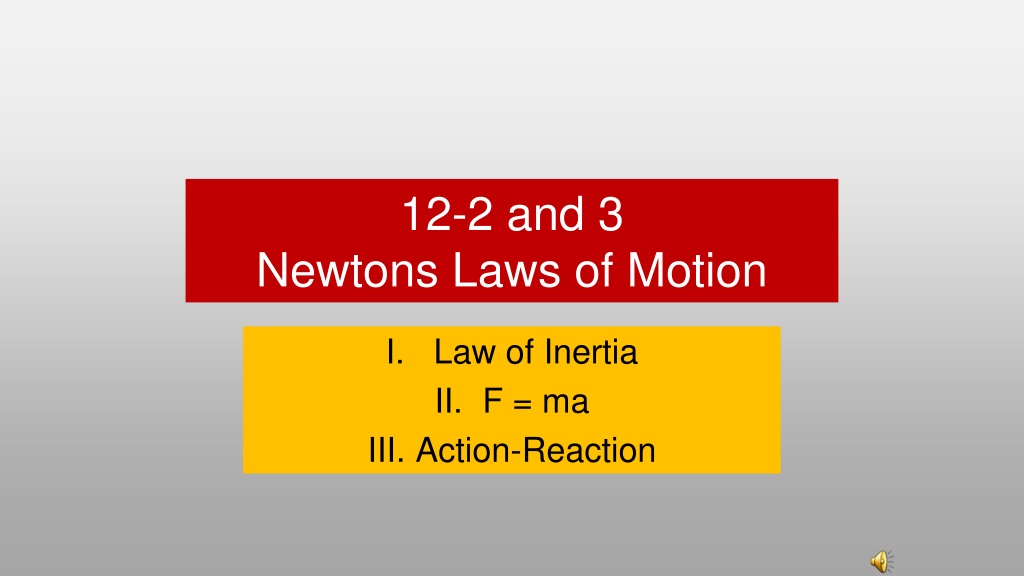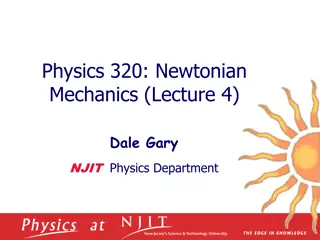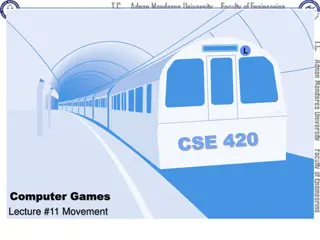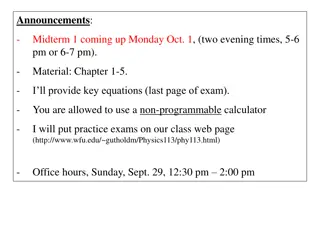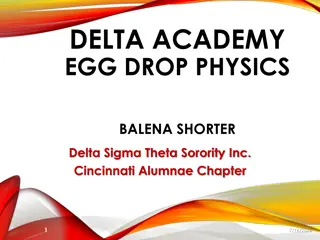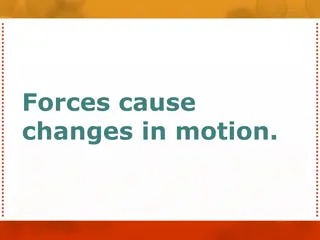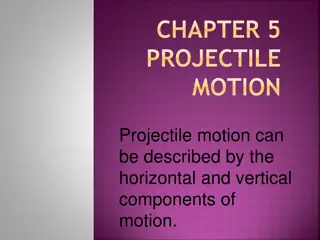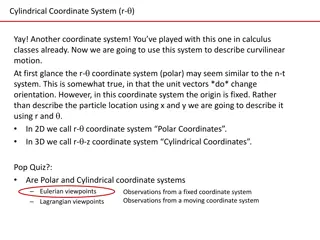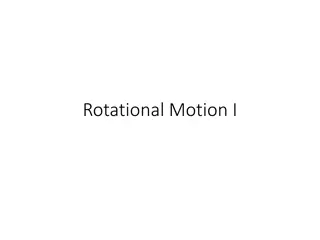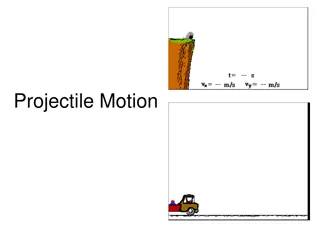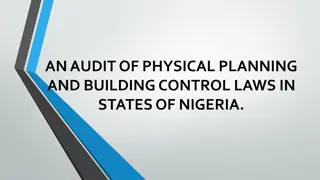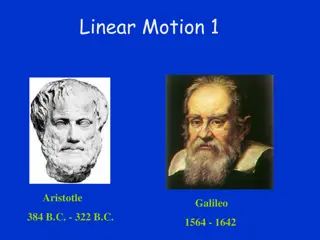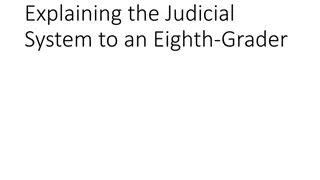Understanding Newton's Laws of Motion
Sir Isaac Newton's three laws of motion revolutionized our understanding of the physical world. From the law of inertia to the principles of action and reaction, these laws govern how objects move and interact in our everyday lives. By grasping these fundamental concepts, we can better comprehend the forces at play in various scenarios and apply them to real-world situations.
Download Presentation

Please find below an Image/Link to download the presentation.
The content on the website is provided AS IS for your information and personal use only. It may not be sold, licensed, or shared on other websites without obtaining consent from the author. Download presentation by click this link. If you encounter any issues during the download, it is possible that the publisher has removed the file from their server.
E N D
Presentation Transcript
12-2 and 3 Newtons Laws of Motion I. Law of Inertia II. F = ma III. Action-Reaction
Learning Objectives I can state Newton s Laws of Motion. I can apply Newton s Laws of Motion to real life situations. I can describe momentum of different objects and how it affects motion. I can explain the relationship between inertia and mass.
Background Sir Isaac Newton (1643-1727) an English scientist and mathematician famous for his discovery of the law of gravity also discovered the three laws of motion. He published them in his book Philosophiae Naturalis Principia Mathematica (mathematic principles of natural philosophy) in 1687. Today these laws are known as Newton s Laws of Motion and describe the motion of all objects on the scale we experience in our everyday lives.
Newtons 3 Laws of Motion 1. An object in motion tends to stay in motion and an object at rest tends to stay at rest unless acted upon by an unbalanced force. 2. Force equals mass times acceleration (F = ma). 3. For every action there is an equal and opposite reaction.
Newtons First Law (law of inertia) An object at rest tends to stay at rest and an object in motion tends to stay in motion unless acted upon by an unbalanced force.
Newtons First Law of Motion: Also know as: Law of Inertia! Inertia is an objects resistance to a change in its motion (even if it isn t moving at all!) Inertia is caused because objects have mass The more mass an object has, the more inertia! An object at rest will stay at rest unless it is acted upon by an outside force. (and the opposite is also true! An object in motion will stay in blah blah blah)
Newtons Second Law (F = ma) Force equals mass times acceleration. F = ma Acceleration: a measurement of how quickly an object is changing speed.
Newtons Second Law of Motion says: To move a mass, you need a force! Also known as F=ma I am so smart More Force = more Acceleration More Mass = more Force needed! The greater the mass = greater inertia = more force needed!
What do you think happens to our acceleration w/ different masses? With less mass, it doesn t take as much effort to get it moving; therefore, I can move it farther in less time (faster). kg 1kg Less Mass = less force needed Distance 2kg With more mass, it takes more effort to get it moving; therefore, it takes me more time to move it farther (slower). More Mass = more force needed Time
What do you think happens to our acceleration w/ different masses if we pushed with the same amount of force? Which one of these lines do you think would represent a sports car? SUV, Diesel Truck? The Diesel truck would be the least steep line! Less steep = less velocity!!! Distance Sports car would be the steepest line! Steeper = more velocity!!! The SUV would be the middle line! Steepness of line is in the middle = middle velocity Time
Newtons Third Law (Action-Reaction) For every action there is an equal and opposite reaction.
Newtons Third Law of Motion Also known as: Action-Reaction For every action there is an equal and opposite reaction. Upwards reaction Rockets take off because of a force downwards from the bottom makes them accelerate in the opposite direction! Downwards force
Vocabulary Inertia: the tendency of an object to resist changes in its state of motion Acceleration: a change in velocity a measurement of how quickly an object is changing speed, direction or both Velocity: The rate of change of a position along a straight line with respect to time Force: Push or pull (strength or energy
